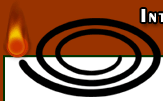






|
|
|||||

|

|

|

|

|
||
|
Microbials - Entomopathogenic Nematode Life Cycle

Bio-insecticide products based on entomopathogenic nematodes consist of the infective juveniles stage of the EPN life cycle. Infective juveniles can survive in moist soil for extended periods of time, but do not feed, surviving on stored energy reserves until a host is located. The ensheathed infective juveniles invade the host, via natural body openings (mouth, anus, spiracles). They then exsheath and penetrate to the haemocoel. The infective juvenile store cells of a symbiotic bacteria (Xenorhabdus spp.) in a specialised anterior portion of the intestine of its alimentary tract. Once in the haemocoel, the juveniles release an associated bacterium into the haemolymph. The bacteria rapidly multiply and the toxins produced kill the insect by septicaemia. The nematodes feed upon the bacteria and degraded insect tissue and develop to first generation adult males and females. After mating, the female nematode produces eggs which hatch in its uterus. The second generation of juveniles feed on the contents of the uterus, then break out into the body cavity and feed within the mothers cuticle. Once the resource of the female has been exhausted, the juveniles break out of the nematode cuticle into the insect haemolymph. These juveniles may develop into male or female second generation adults. The adult nematodes mate and a third generation is then produced. Some of the third generation juveniles continue to mature and develop to third generation adults. But, as the insect resource becomes exhausted, most of the juveniles differentiate into third stage juveniles, to become the survival form of the life cycle. The insect cuticle then ruptures and the third stage ensheathed juveniles escape into the surrounding environment (Wouts 1980; Poinar 1990). Poinar, G.O. (1990). Biology and Taxonomy. p23-58. Entomopathogenic nematodes in biological control. CRC Press ed R. Gaugler and H.K. Kaya. Wouts, W.M. (1980). Biology, life cycle and redescription of Neoaplectana bibionis Bovien, 1937 (Nematoda: Steinernematidae). J. Nematology 12 1 62-72. |
|
|